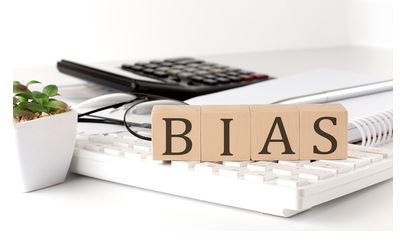Defining unconscious bias
According to the University of California San Francisco’s website, “unconscious biases are social stereotypes about certain groups of people that individuals form outside their own conscious awareness.” The definition of bias has changed and expanded over the years. Now is a good time to review the definition and see if it impacts your workplace.
Just as important is the fact that “everyone holds unconscious beliefs about various social and identity groups, and these biases stem from one’s tendency to organize social worlds by categorizing.” The main problem with unconscious bias is that they have the potential to cloud people’s judgment-making abilities. It can result in poor decision-making outcomes.
How unconscious bias impacts the workplace
One study in particular found that employees may respond in the following ways if they perceive themselves as being the victim of negative unconscious biases at work:
- Withhold new ideas and solutions from their employer.
- Refrain from referring others to available positions with the company.
- Look for another job and quit as soon as possible.
For many reasons, these are not preferable outcomes. They can result in numerous retention issues. This is not only time-consuming but also expensive on for employers. Therefore, employers must understand the concept of unconscious biases and the disadvantageous side effects that stem from them.
We have included eight different types of bias down below. Keep in mind that these biases are categorized as unconscious but that doesn’t mean they cannot occur consciously as well. Awareness and responsibility of your own biases is key.
1. Gender bias
When people are treated differently based on a certain detail that sets them apart, bias is at play. In the case of gender bias, treating men and women differently in the ways that they are recruited, compensated, promoted and disciplined at work is indicative of gender bias.
2. Racial bias
According to Healthline, “racial bias happens when attitudes and judgments toward people because of their race affect personal thoughts, decisions, and behaviors.” In other words, racial bias results in discriminatory behaviors towards people based on their skin color and background in ways that are beyond unfair and inappropriate.
3. Age bias
This is a form of bias that refers to the act of making assumptions about someone solely based on their age. As an example, the internal belief that younger employees cannot be entrusted with the responsibility of leadership roles, or that older employees do not have the capacity to understand or value technology in the workplace, are two forms of age bias.
4. Confirmation bias
Per an SHRM article, confirmation bias is when “our views are influenced by people around us and usually occurs when we are seeking acceptance from others.” For instance, if an employee agrees with a fellow coworker about their coworker’s opinion on a work-related project because the employee wants to be friendly despite secretly disagreeing with the other person, the confirmation bias stems from agreement for the sake of friendship, not authentic agreeance.
5. Affinity bias
When an employee favors a fellow employee simply due to the fact that they share similarities with one another, affinity bias is at play. For instance, if a hiring manager selects a certain job applicant over another because they have similar hobbies and interests, then the hiring manager is operating from a place of affinity bias.
6. Appearance bias
When someone judges another person and then acts on those judgements based on physical traits, such as weight, height, skin color, hairstyle or subjective level of attractiveness, the person forming the judgments is engaging in appearance bias. A work-related example of appearance bias would be hiring someone strictly because they are deemed to be physically beautiful or attractive, meaning they are offered a position based on how they look rather than their job competencies.
7. Horns effect bias
When someone perceives a negative trait in another person and then uses that one trait to form other negative assumptions about that individual, horns effect bias is at play. For instance, say an employee calls in to let their employer know that they are running late one morning. From there, if their boss then goes on to view them as being an unreliable employee, even though they have a reasonable excuse.
8. Halo effect bias
The halo effect bias is the polar opposite of the horns effect bias. This means the halo effect causes people to let one good detail about a person cause them to assume multiple other positive things about that person regardless of whether those assumptions are accurate or not. The problem with this type of bias is that those other “good” assumptions may be wrong. This leads people to think more highly of individuals than they otherwise would.
Keep in mind that there are many other forms of biases that can arise in the workplace, both consciously and unconsciously. These eight examples are just a handful of the many possibilities. It’s important to be mindful of how bias may arise in the workplace to avoid treating people unfairly at work.
Learn more from SHRM here.
Learn more about ManagedPAY here.
